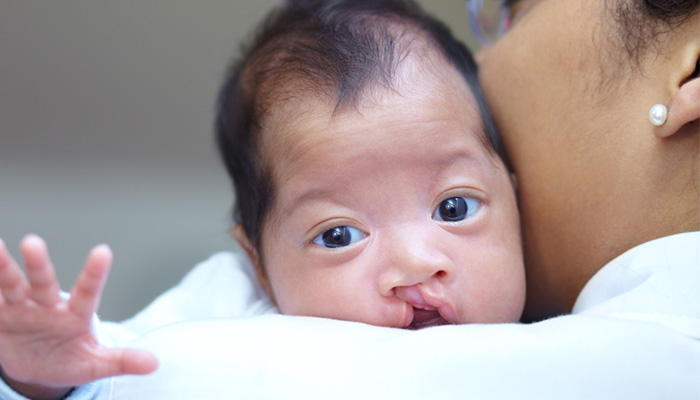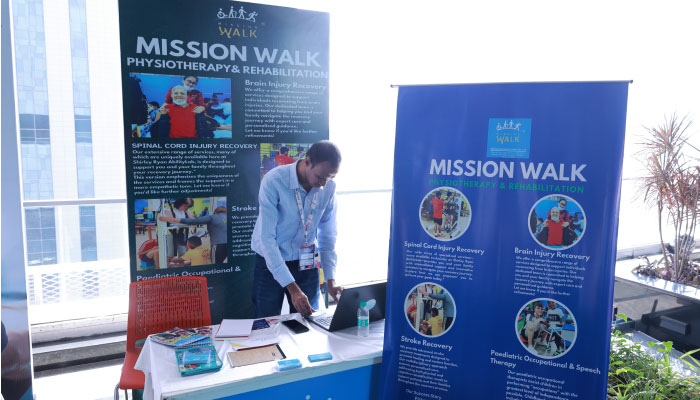A friend’s wife gave birth to a baby boy. But the joy of a new arrival quickly turned into grief. The reason…the baby had a visible split in his lip; physicians called it cleft lip and palate.
Cleft is an abnormal vertical split or fissure between two parts occurring during the development of the embryo. Palate is the upper and top portion of the mouth. It is the skeletal and muscular division that separates the nasal and oral cavities of the mouth.
Cleft lip and palate- The visible anomaly
A cleft lip is the presence of one or two longitudinal abnormal fissures or splits in the upper lip. The slit can be a small opening in the lip or it can be a wide opening that goes from the lip to the nose. A cleft palate is a fissure in the roof of the mouth which occurs due to abnormality of the two palatal shelves in joining together to form the complete palate. In some children the front (hard) and back (soft) portions of the palate fail to join. In some children only one part of the palate is open.
There can be a cleft lip without cleft palate or cleft palate without cleft lip or both can occur together simultaneously. The deformity occurs during early development when the baby is still growing inside mother. Clefting occurs when there is insufficient tissue for the proper formation of the upper lip and palate or when the tissue fails to join properly. Cleft lip and cleft palate can occur on both sides of the mouth as they develop separate. These are among most common birth defects which may be associated with various genetic conditions. These affects the way the baby’s face looks and can lead to problems associated with eating, speaking and listening.
In most of the cases, it is not known as to why cleft lip and cleft palate occur. But it is believed that these congenital defects occur due to genetic and environmental reasons. If anyone in the family such as parents, siblings or relative has already had any of these conditions, then there is higher risk for the baby to be affected by clefting. If the mother had taken some of the anticonvulsants or antiseizure medicines or medicines to treat cancer, psoriasis or arthritis during her pregnancy, then these medicines may cause cleft lip or cleft palate. Cleft lip and cleft palate can be part of other medical conditions also such as Pierre Robin Malformation Sequence (congenital condition of facial abnormalities in humans), Amniotic Banding (congenital disorder caused by entrapment of fetal parts in the protecting or nourishing fluid of the uterus), Hemifacial Microsomia/Glodenhar Syndrome or Tessier facial clefts (condition in which the lower side of the face does not grow normally) and others.
Complications
In children with cleft lip and cleft palate, depending on the severity of deformation, various problems are encountered.
In the absence of separation in the palate, liquids and food can enter into the nose from the mouth. Specially designed feeding bottles with nipples are now available to stop fluids and food flowing back into the nose. Even manmade palates are available to help these children with cleft palate to feed properly until proper surgical treatment is provided.
Fluid buildup can occur in children with cleft palate making them more prone to middle ear infections. If these infections can cause loss of hearing if not treated. To aid regular fluid drainage from the middle ear, special tubes are needed to be placed in the ear drums. These children need regular exam at least once a year to check for any ear problems.
Children with cleft palate may face problems in their speech as their sounds are not carried on well and make take on a nasal pitch. In most the children surgery can fix this problem and in some children, assistance of speech pathologist may be needed who can work with these children to resolve the problems.
Children with clefts are more inclined to suffer from dental problems due to malformed, missing, extra or misplaced teeth. In addition, children with cleft palate are likely to have defective bony upper gum part that holds the teeth. This defect may prevent proper development of the upper ridge, displace and rotate permanent teeth and hider the appearance of teeth. Most of these problems can be corrected through surgery.
Due to differences in the appearance from the normal children and also because of the stress from the intensive medical treatment, these children with clefts may experience social, behavioral and emotional problems. A psychologist or social worker can help your child, you and your family to overcome these difficulties.
Treating cleft lip and palate
In most of the cases, cleft lip and cleft palate are found at the time of birth; but now mostly diagnosed during ultrasound exams of the mother during pregnancy prior to baby’s birth. If the ultrasound exam indicates cleft, the doctor may take sample of the fluid from mother’s womb to check for any genetic abnormalities. After birth, these defects can be diagnosed through physical examinations of the mouth, nose and palate. Sometimes other diagnostic tests may need to be carried out to rule out other abnormalities.
As the condition of cleft lip and cleft palate is associated with number of oral health and medical problems and may involve a series of reconstruction surgeries, a team of medical specialists and doctors is necessary for the proper care of the children who have these birth defects. The team may consist of the following depending on the care required may start in infancy and continue till adulthood.
- Cosmetic/plastic surgeon to asses and conduct necessary operations of the lip and/or palate
- Otolaryngologist (an ear, nose, and throat doctor) to render appropriate treatment for the hearing problems.
- Oral surgeon to position various segments of the upper jaw in place and to enhance the function, improve the appearance and repair the cleft of the gum
- Orthodontist to straighten and align the teeth in position.
- Dentist to render required dental care.
- Prosthodontist (A type of dental specialist) for making cosmetic restoration and replacement of teeth.
- Speech pathologist to evaluate feeding and speech problems
- Speech therapist to assist the child in improving speech
- Audiologist (a specialist in communication disorders stemming from a hearing impairment), to monitor, evaluate and attend to any hearing problems.
- Nurse to provide necessary medical and health assistance.
- Psychologist/social worker/counselor to provide required support to the family and to the child.
- Geneticist, a specialist in the subject of genetics, to asses, diagnose and manage cleft lip and cleft palate patients and help parents in understanding the chances of having more children with these conditions
Depending on the extent of deformation, a cleft lip may need one or two surgeries which may be performed when the baby is 3 months old.
Cleft palate generally requires many surgeries over a long period even extending to 18 years. The initial surgery to repair the palate is done when the age of the baby is between 6 and 12 months. This surgery is carried out to create a functional palate, to decrease the risk of fluid buildup in the middle ears, and to aid in the proper development of the teeth and facial bones. Around the age of 8 years, these children may require bone graft to fix the upper gum so as to hold permanent teeth and stabilize upper jaw. To correct any problems related to speech, 20% of the children with cleft palate may require further surgeries. Subsequently, braces are required to straighten the teeth.
Further surgeries may be needed to improve the look of the lip and nose, bridge the gap if any between the nose and the mouth and repositioning of the jaw. Final repairing surgeries of the scars may be carried out only in adolescence when the facial structure is completely formed.
Preventing cleft lip and palate
Not much is known to prevent oral and facial clefts. National Institute of Environmental Health Sciences suggested that folic acid fortified food during pregnancy seem to reduce the risk of developing cleft lip with or without cleft palate by one third. Centers for Disease Control and Prevention recommend all females who can become pregnant to take a multivitamin containing 400 micrograms of folic acid before pregnancy as part of healthy diet to prevent these types of congenital defects.
Cleft lip and palate- Key points
In brief, or facial clefts are the congenital defects that affect babies while they are still in the process of development. The development of cleft lip and cleft palate may be prevented by taking multivitamin with folic acid and avoiding taking certain medications before and during pregnancy. Though it is possible to diagnose these defects during pregnancy but after birth these can be diagnosed through physical exams and tests. The children with orofacial clefts may require treatment starting from infancy and may extend up to their adulthood due to various complications associated with these defects. A team of experts is required to take care of these needs depending on the extent of abnormalities and the complications associated.



